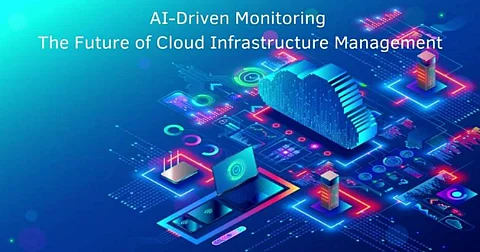

In this rapidly growing digital era, organizations increasingly rely on cloud computing to drive their operations efficiently. However, monitoring the performance, security, and scalability of cloud environments presents significant challenges. Traditional monitoring techniques often fall short, leading to downtime and suboptimal resource utilization. This is where AI-driven monitoring solutions, as explored by Manojava Bharadwaj Bhagavathula, offer a revolutionary approach to cloud infrastructure management. By leveraging artificial intelligence, organizations can proactively detect issues, optimize resources, and automate remediation processes, ensuring seamless and secure cloud operations.
While conventional cloud monitoring relied on fixed thresholds and manual tasks-with the resultant lag in time-to-repair and wasteful resource utilization-AI-based monitoring leverages machine learning to detect anomalies, predict failures, and automate real-time corrective action. Such data-guzzlers are inherent to support uninterrupted operation, thus minimizing downtime. AI will allow IT teams to offload mundane tasks in order to concentrate on implementing key strategic initiatives, maximizing efficiency, reliability, and performance of the cloud infrastructure.
AI-powered monitoring tools gather massive datasets across cloud environments: application logs, system metrics, and network traffic combine in a single view of the infrastructure. They process millions of data points every second to allow faster, more accurate decision-making. Advanced correlation techniques help detect many hidden issues by analyzing interrelationships between server loads, network latencies, and user access patterns. Enhanced visibility also promotes proactive resolution of performance issues, thus optimizing the cloud in performance, resilience, and reliability.
Anomaly detection, by including methods of both supervised and unsupervised learning, has been enhanced by AI-based security monitoring to identify unusual patterns in the system's behavior. As opposed to being static and based on thresholds, the artificial intelligence algorithms dynamically work with historical trends, thereby reducing false positives and improving threat remediation. They continuously adapt to new forms of cyber threats, tracking behavioral patterns for the detection of new patterns of attack. This proactive stance arms cloud security with fewer data breaches and service interruptions-for stronger protection of the infrastructure.
The predictive scaling is one of the most attractive features of AI monitoring. In classic scaling, resources are increased in response to fluctuations in demand after the demand has already occurred, which results in some inefficiencies. On the other hand, the AI models study the historical data for predicting future resource requirements well ahead in time. Such predictions reduce instances of over-provisioning, increase performance, and facilitate effective cloud billing.
For example, dynamically allocating resources requires the use of machine learning algorithms to gauge usage trends. An AI-based predictive-scaling system could anticipate traffic spikes at peak hours and provision additional computing power before performance is affected. Thus, it enhances the user experience, safeguards against downtime, and optimizes costs, ensuring organizations only pay for the resources they need.
Issue detection, prediction, and remediation happen completely autonomated with minimized downtime interference of the human. With AI being able to restart services, reallocate resources, and change configurations to keep a system stable, the system is continuously learning from incidents, preventing disruptions, thus increasing resilience. It lets IT teams concentrate on innovation and strategy by automating mundane tasks.
Using AI monitoring has always helped reduce cloud wastage, operating costs, and unplanned downtimes, saving companies millions a year. It contributes to better security, resulting in lower financial risks from cyber threats. It also automates compliance reporting at regulated standards, thus minimizing administrative costs and costs due to penalties. Such increases have improved resource allocation, efficiencies, and overall financial and security resiliency.
Although it has its advantages, field monitoring through AI has a number of challenges including those related to the quality of data, integration, and model explainability. High-quality, fresh input is fundamental to accurate predictions. Besides, organizations need to adopt common frameworks that will provide accessibility for AI applications in the existing cloud infrastructure. Proper training and education are also necessary to prepare the IT team in understanding and trusting AI-based insights.
To curb such evils, corporations are now putting money into AI governance frameworks that encourage transparency and accountability. Establishing explainable AI models will increase organizations' confidence in automated monitoring systems and compliance with their business objectives through decision making.
Recent advancements in AI and machine learning hold the key to cloud infrastructure monitoring in the future. The innovations such as self-learning models, enhanced data governance, and multi-platform functionalities will make these systems even more effective. Gradually as the AI capabilities get integrated into the organizations, they will gain a greater foothold in cloud operations with higher efficiency and security.
Thus, Manojava Bharadwaj Bhagavathula succinctly remarks on the way AI monitoring would redefine the management of cloud infrastructure. It's proactive in cloud health care, with features that include intelligent automation, predictive analysis, and advanced security measures. As adoption continues to rise, AI-powered monitoring holds an inevitable place in becoming a real-time identity-to-usage tracking tool for businesses to optimize their cloud settings.
